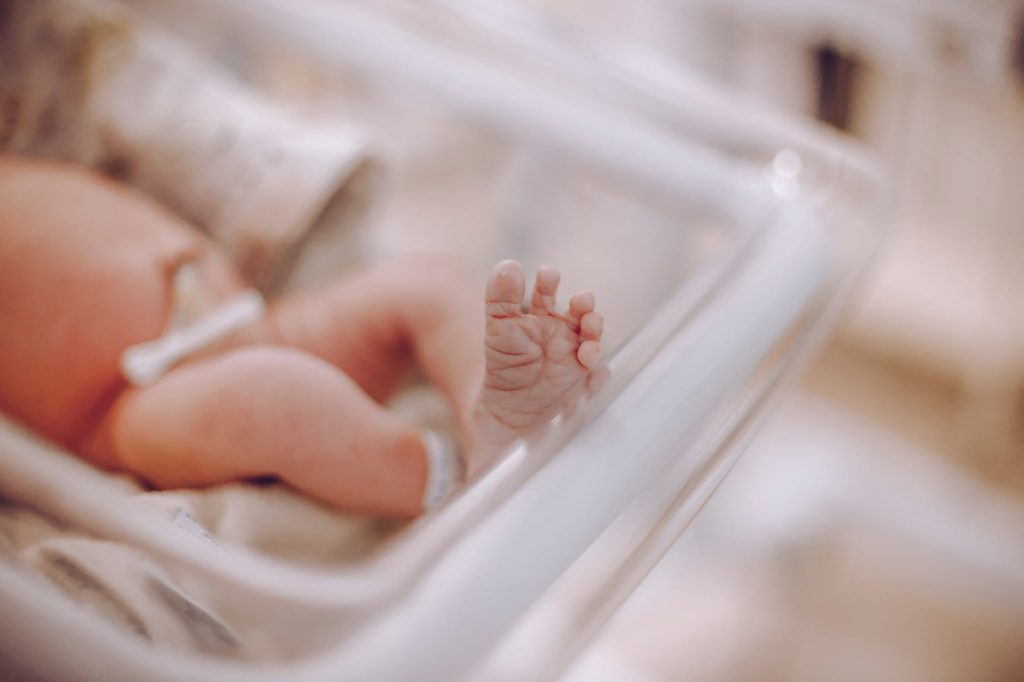Disclaimer: I am not your healthcare provider, and this is NOT health advice. I am just sharing my experiences and opinions, one mom to another. Ask your healthcare provider for specific medical advice.
This post may contain affiliate links. As an affiliate, I make a commission on qualifying purchases at no extra cost to you. See Disclaimer for more details.
I have noticed a trend when discussing the safety of Home Birth:
When reporting on outcomes, home births which are accompanied by a Licensed Midwife who is skilled, has a transfer plan, and only serves ‘low risk women’ are almost always lumped together with unplanned or accidental home births, freebirths in which no midwife attends, home births managed by un-licensed ‘midwives’, and birthing women who are higher risk.
I’m not the only one who has noticed this.
Are all home births created equal? No!
If women can meet certain standards, why can’t home birth also be a safe and reasonable option? I think it can.
The American College of Obstetricians and Gynecologists has several items they consider to be “critical to…achieving favorable home birth outcomes” including:
- that candidates for home birth are carefully selected
- the availability of a skilled and certified midwife or provider
- timely transport to a nearby hospital
- woman is low risk
What are some things that make a woman low risk? (Most pregnancies are low risk)
- the fetus is favorably positioned
- it is a single gestation (not twins or multiples)
- no prior cesarean delivery
- no active complications or conditions
The ACOG states that while they believe hospitals are the safest settings for birth, “each woman has the right to make a medically informed decision about delivery.”
I wholeheartedly agree with that statement. Birth choice is a human rights issue, in my opinion, and all women need to have the freedom to make informed decisions on birth. Maybe the hospital IS the right place for some women.
But, what happens when a woman DOES have a skilled and licensed midwife, she is low risk, and meets other such standards? Is the hospital still the best place for her?
There is beginning to be more and more recorded evidence that has caused myself and many others to ask the question:
Is Home Birth Safer than Hospital Birth for Low Risk women?
Indeed, a good case could be made that the answer to the question “Is hospital birth safe for the low-risk woman?” is “No.”
Henci Goer
In her article Dueling Statistics: Is Out-of-Hospital Birth Safe? Henci Goer, award-winning childbirth educator, author, and speaker, mentions a looming problem birthing women face in hospitals all around the world: “a gross overuse of tests, drugs, restrictions, and procedures in hospitals.”
And it’s true.
Its not a secret that many women planning home births do so in order to avoid unnecessary routine interventions. Women also cite having less anxiety in the home compared to the hospital, which I’ve already discussed is quite important when giving birth.
Not withstanding their recommendation towards hospital birth, the ACOG states:
Recent studies have found that when compared with planned hospital births, planned home births are associated with fewer maternal interventions, including labor induction or augmentation, regional analgesia, electronic fetal heart rate monitoring, episiotomy, operative vaginal delivery, and cesarean delivery
ACOG (formatting mine)
That is a BIG deal!
According to this study published in 2011 reviewing births that took place in England, planned hospital births were significantly more likely to provide women with instrumental deliveries, epidurals, and other medical interventions, all of which come with their own host of risks.
Women who planned home births were noted to be “significantly more likely to have a “normal birth.” “
Not only did the results support low-risk women in choosing home births, one of the key findings they also noted was this:
Women planning birth in a midwifery unit and multiparous women planning birth at home experience fewer interventions than those planning birth in an obstetric unit with no impact on perinatal outcomes.
Birthplace in England Collaborative Group
That last part is vital! Fewer interventions with no impact on perinatal outcomes (for multiparous women)? Doesn’t that equate to… home birth is safer than a hospital birth?
Think about it. In a situation where perinatal outcomes are the same, but interventions and their risks are significantly reduced at home, then why would you chose to birth in a hospital?
Another study of 585,291 pregnancies in the UK found that the likelihood of postpartum hemorrhage “was significantly higher if a hospital birth is intended than if a home birth is intended”. Is that what safe is?
Saraswathi Vedam (RM, CNM, MSN, Sci. D), shares some excellent questions for consideration in her Ted Talk.
- What is the measurement of a safe birth?
- Who should decide?
- Who is most invested?
- Do doctors really care more about newborn’s wellbeing than the mother does?
She goes on to say that women know that if they aren’t well, they don’t feel safe, or they receive unnecessary interventions, those things affect how they feel about their babies and about themselves as mothers.
I’ve heard people say (after a traumatic birth) “At least the baby is healthy!”
Is “having a healthy and alive baby” the most important thing? Of course.
But is the baby’s outcome the only mark of a safe birth? Can’t we give women more than that?
…having a baby is not just about the healthy child at the end of the journey, as so many claim. Pregnancy and childbirth is a pivotal point in a woman’s life. The positive or negative feelings a woman experiences during this event can determine the course of the birth, and these feelings can, and often will, alter her forever. Birth is a rite of passage not to be taken lightly and not to be molested. This experience can be incredibly traumatizing to a woman, or it can be spiritual and transformative.
Birth Matter’s A Midwife’s Manifesta, Page 181
(Plus, if the mother isn’t well, is the baby really okay? )
What about the care, respect, dignity, health, pain, sacrifice, and may I say: anguish, the mother may or may not experience?
Anguish might sound extreme, but ask a woman who has healed from the major-abdominal-surgery that is cesarean section, and later discovered it was unnecessary, how she feels.
Interventions have effects.
My baby’s face was cut by the doctor when he did the cesarean. They covered her with a blanket–nobody told me.
Sarah (Massachusetts) From Silent Knife page 48
My doctor wouldn’t listen to me…I was going nuts. When it was all over, the doctor said I was probably right.
Tammy (Indiana) From Silent knife page 48
The father of my child fears for my life. For me–I care less–as a repeat section is as difficult to accept as death.
maryann (Tennassee) from silent knife page 52
The researchers conclude that there is minimal negative reaction. This can’t be true. All the cesarean mothers I see are frustrated, scared, and sad.
Ella (Texas) from silent knife page 50
These are the experiences of real women, who want the best for their children but feel conflicted by the care they received in a hospital setting.
The evidence suggests strongly that providers are too quick to suggest interventions that have real and lasting effects and consequences in women’s lives, and that is what is leading many women to choose home birth.
And I, personally, have a hard time imagining that I would consider a birth in which I was not allowed eat or move while laboring heavily for 12 hours a birth that was safe or desirable care.
I (like most women I know) would absolutely agree to have a C-section if it was medically necessary, but I am concerned with the fact that C-section rates are still over 30% in this country.
We are offended when people suggest that we are choosing home birth, choosing respectful care, just for our own convenience, or for comfort, like some sort of cosmetic option.
SARASWATHI vEDAM
I believe, like the ACOG states, that women are entitled to make their own informed birth decisions.
Healthcare providers shouldn’t just perform a list of ‘routine’ interventions on each and every woman without considering her needs or desires, and especially not without informed consent.
That isn’t safe.
But views of home birth are changing. I think home birth is once again starting to appeal to women, and evidence is starting to finally catch up with it.
Home birth is not just a choice that is ‘magical but risky’.
Home birth can be a responsible and safe choice that takes the wellbeing of BOTH the baby and the mother into account.
In her article, “The Dangers of Planned Hospital Births”, Judy Slome Cohain stated:
Where trained and equipped birth attendants are available, and hospital transfer is closer than 30-45 minutes, a planned, attended homebirth is safer for low-risk women than a planned hospital birth.
Judy Slome Cohain
Is that true?
In my opinion, it is.
There are 3 more major items I think are important to consider in this discussion.
The first, is a landmark research analysis published in 2019 by Eileen K. Hutton et al.
The second is the impacts of birth place on breastfeeding.
The third is the affect of birth interventions on postpartum depression.
1.

The systematic review published in The Lancet in 2019 is important and exciting information. Studies regarding out of hospital birth are growing in number and more are needed.
The review is titled: “Perinatal or neonatal mortality among women who intend at the onset of labour to give birth at home compared to women of low obstetrical risk who intend to give birth in hospital: A systematic review and meta-analyses”
The reviewers in this analysis identified 17 studies from the years 1990-2017, that included about 500,000 intended home births, of which 14 had data that was eligible to be pooled. (That is a lot of home births! The larger the sample size, the more precise the information can be.)
They categorized women based on their risk level, intended birth setting, as well as other factors such as how ‘well-integrated’ the home birth environment was.
They defined ‘well-integrated’ as: “a place where home birth practitioners:
- are recognised by statute within their jurisdiction;
- have received formal training;
- can provide or arrange care in hospital;
- have access to a well-established emergency transport system;
- and carry emergency equipment and supplies.”
Of all the evidence they reviewed, they concluded that:
Women who are low risk and who intend to give birth at home do not appear to have a different risk of fetal or neonatal loss compared to a population of similarly low risk women intending to give birth in hospital.
Hutton et al (formatting mine)
They notably also found that an Apgar score of less than 7 at 1 minute was statistically different in favor of planned home birth, compared to planned hospital birth.
They also found that risk for neonatal resuscitation or admission to intensive care were not different for women who planned home birth.
In fact, the researchers actually found that for multiparous women who intended home birth, admission to intensive care was 27% less likely to occur!
What do we learn from this meta-analysis?
Henci Goer, in her commentary on the review, suggests three conclusions that I will summarize below:
- When home birth is intentional, it is a sensible choice that is supported by the best evidence we have available.
- Home Birth practitioners should be integrated into the healthcare system in order to attain optimal home birth outcomes
- Hospital care should be safe, humane, and evidence based. Women have the right to make their own healthcare decisions.
This information confirms what many women have hoped and suspected, that when women have access to BOTH high quality home birth care, as well as appropriate medical aid nearby, outcomes for infants born at home are good.
2.

The previous item I discussed described how home birth can be an equally safe choice compared to hospital birth, and now I would like to discuss two important topics that lead me to wonder if home birth can even be safer than hospital birth.
The impact of place of birth on breastfeeding.
Over 10,000 low-risk mother infant pairs from Ireland and over 17,000 pairs from the UK were included in a study that examined the link between place of birth and breastfeeding outcomes.
At every examined time after birth, (birth, 8 weeks, 6 months, and exclusive breastfeeding at 6 months) planned home birth was found to be strongly linked to breastfeeding.
“Home birthed infants were overall twice as likely to be breast fed and sustained breast feeding.”
The authors of the study discuss that it is unknown why hospital births are associated with less breastfeeding than home births. They suggest that the type and level of care may have a role. In planned home births, care is usually midwife-attended as opposed to physician (and a team of other health professionals) attended at a hospital.
(An interesting note: another recent study from the Netherlands found that breastfeeding success rates actually did not differ much between home and hospital births–when the hospital births were midwife-led!)
I am deeply interested in the link between type of care provider and success/satisfaction rates and outcomes for mothers and infants, but that will have to wait for another post.
In addition, the following interventions are associated with lower breastfeeding rates, and are all quite common in hospitals today:
- Pitocin used for both induction and labor augmentation tends to have a negative impact on breastfeeding.
- Planned C-sections are associated with shorter breastfeeding relationships.
- Stress during labor and delivery is associated with delays of onset of lactation.
- Analgesia can negatively interfere with breastfeeding.
- Hospitals are associated with formula supplementation, which reduces the likelihood of exclusive breastfeeding and shortens the breastfeeding duration.
- Midwife attended births led to women who were twice as likely to breastfeed for at least 6 months, compared to obstetricians.
What’s even more worrisome is that many women who receive 1 intervention during a hospital birth, receive others following it. If each intervention is associated with breastfeeding struggles, imagine the impact on breastfeeding if you had multiple or all of the interventions listed above!
Why does this matter?
It matters because breastfeeding is important. Breastmilk is the normative and optimal nutrition for infants.
Here are just some of the benefits of breastfeeding:
- Breastmilk prevents infections and illness including cancer in mother and infant
- Breastfeeding reduces the risk of SIDS
- Breastfeeding may increase maternal sensitivity and responsiveness
- Breastfeeding is associated with improved cognitive performance in children.
- Breastfeeding has been found to reduce maternal stress
- Mothers who do not breastfeed or wean early are “prone to postpartum depression”
- and much, much more.
When measuring the safety of a birth setting, how can impact on breastfeeding be ignored?
I realize, and am living proof, that successful sustained breastfeeding is not required for a baby to survive and even thrive. But it it is safer, healthier, and it is how babies were meant to be fed.
If successful breastfeeding is the goal, home birth is more likely than hospital birth you get you started on the right foot.
There is a connection between birth place and breastfeeding.
Here’s another thought:
Imagine another mammal (like your cat, or a chimpanzee, for example) trying to labor and birth in a loud strange, bright, place. Do you think they would be comfortable? No! Their instincts will tell them to leave, and find a quiet corner!
The wonderful book “The Womanly Art of Breastfeeding” discusses the same idea:
Pick a mammal, any mammal, and imagine it giving birth the way we do.
Let’s say you take your laboring dog to a strange place with bright lights, lots of strangers, people who stick their fingers in her vagina repeatedly, tubes going in, tubes coming out, drugs, needles, belts around her belly, and a “machine that goes ping.”
Is she likely to have an easy time with motherhood? Our instinct is to give her a familiar place, quiet, dim lights, and privacy. Those are good instincts for humans, too.
The Womanly Art of Breastfeeding, 8th edition, page 50 (formatting and emphasis mine)
Breastfeeding is a skill that takes a calm mother and a calm baby to master.
Calm, (at least for me) means, no bright lights, no strangers, no loud noises, no hospital gowns, and no people sticking their finger in your business or kneading your belly like a loaf to make to contract after the baby is born.
Home birth can provide the peace, comfort, familiarity, and satisfaction that will give the vital energy to the mother and infant while they are learning this new relationship together.
Midwives providing home birth services have also suggested that the sense of empowerment and satisfaction that many women express after a home birth forms the foundation of empowered parenting and successful breast feeding
Association between home birth and breast feeding outcomes
3.

Routine hospital interventions are associated with postpartum depression.
Postpartum depression makes figuring out new motherhood, which is already quite hard, even harder. In order to create a more gentle transition into motherhood, the risk factors for PPD need to be carefully considered.
Mode of labor and delivery are significantly linked to postpartum depression. and we already know that mode of labor and delivery are affected by place of labor and delivery.
“Women who had an induced labor showed a higher level of PPD than women who had a spontaneous one. In the same way, women who had a cesarean delivery reported a higher level of PPD than women with vaginal delivery.”
A Comprehensive Analysis of Post-partum Depression Risk Factors
Another strong predictor of Postpartum depression mentioned in the above study was epidural analgesia.
I wouldn’t be surprised to discover if many women who receive an epidural were not informed of all the risks involved, including heightened risk for postpartum depression.
Data showed that a longer duration of the administration of epidural analgesia could be considered significant predictors of PPD in nulliparous.
A Comprehensive Analysis of Post-partum Depression Risk Factors:
The researchers noted that epidural, along with other labor factors, can negatively influence the quality of the birth, which in turn has the potential to develop into depression. On the other hand, easier childbirth acts an a protection during the intimate and special time after delivery.
Some women may be surprised to hear a non medicated birth referred to as an “easier childbirth”.
I touched on the topic in my post about labor pains, and it bears brief repeating here as well: not all pain is bad! In fact, some pain is good, including birth pains.
Endorphins are one of the hormones that make women feel alert, happy, and even euphoric after birth. Endorphins are hormones produced when the body faces stress or pain, such as in child birth. The endorphins which are produced during labor prepare mothers for the period thereafter.
Guess what affects the natural rising levels of endorphins? Epidural.
For women who don’t use pain medication during labor, the level of endorphins continues to rise steadily and steeply through the birth of the baby. (Most studies have found a sharp drop in endorphin levels with use of epidural or opioid pain medication.)
The role of hormones in childbirth
(Epidural also reduces maternal oxytocin, another important birth hormone that is linked to Postpartum Depression.)
A 2003 literature review found that other obstetric factors such as c-section, forceps, hemorrhage, and formula feeding, “make a small but significant contribution to the development of postpartum depression”
One study of birthing women in Turkey correlated enema (no longer routinely given to mothers in the US– but it once was!) and artificial rupture of membranes (still a very common intervention in the US) with postpartum depression.
Here is another:
The type of birth a woman experiences influences breastfeeding and her emotional health. Contrary to previous findings, epidurals are associated with lower breastfeeding rates and higher rates of postpartum depression. Other birth interventions and complications, such as postpartum hemorrhage or surgery, have a negative impact as well.
Birth Interventions Related to Lower Rates of Exclusive Breastfeeding and Increased Risk of Postpartum Depression in a Large Sample
In my research for this article I found several studies that claimed that other routine interventions and obstetric factors had little or no impact on postpartum depression.
However, I also found studies such as this review of over 17,000 women that concluded that “women who received midwife-led continuity models of care were less likely to experience intervention and more likely to be satisfied with their care”.
We already know from the last section that interventions, place of care, and type of care provider each have an affect on breastfeeding, which suggests to me that those factors may also have an indirect affect on postpartum depression.
More studies are needed on this topic.
Postpartum depression is serious, and reducing its risk factors as much as possible is a reasonable and noble goal.
In closing I would like to repeat some of the important key points I have outlined:
- There is evidence that planned home births for low risk women provide equal infant outcomes compared to hospital birth, when the homebirth is attended by a certified midwife.
- There is evidence that planned hospital births significantly increase interventions (which suggests they are unnecessary interventions)
- Home birth is associated with successful breastfeeding.
- Mode of delivery as well as some birth interventions are associated with Post Partum Depression, as well as breastfeeding.
The point of this article is not to suggest that hospitals are bad. Hospital births are not for everyone, but neither are home births. In fact, the ability to have a safe hospital transfer is a vital part of home birth.
Ideally, I would like to see hospital maternity care continue to improve until women are able to receive individualized and thoughtful care with no increased risk of unnecessary intervention, should they choose that setting.
But, even if that did happen, some women still wouldn’t choose the hospital setting to birth in, and that’s okay. Its actually good. Their choice needs support and acknowledgement.
No matter where you choose to birth, there is no such thing as a 100% risk free birth. Therefore, women and their partners should weigh thoughtfully the benefits and risks.
Yes, both planned home and hospital births have their place, and they can both achieve positive outcomes, but as I hope to have outlined in this post, there is only one place in which birth is currently viewed and treated as a truly non-pathological event.
And that is home.
And so I echo the words of Hannah G. Dahlen, Western Sydney University Professor of Midwifery:
“The evidence to support the safety of homebirth for low risk women attended by professionally educated midwives in well-integrated settings is now very convincing. Perhaps we need to ask: is hospital birth safe or sustainable for low risk women in developed and developing nations?”
“Is it Time to Ask Whether Facility Based Birth is Safe for Low Risk Women and Their Babies?”
If you liked this post, check out these:
– Home Birth: 100 Tips To Prepare You For Yours
– 50+ Pain Relieving Tips To CONQUER Natural Childbirth
– Why Birthing Women Need Peace, Support, Time, and NOT Fear



